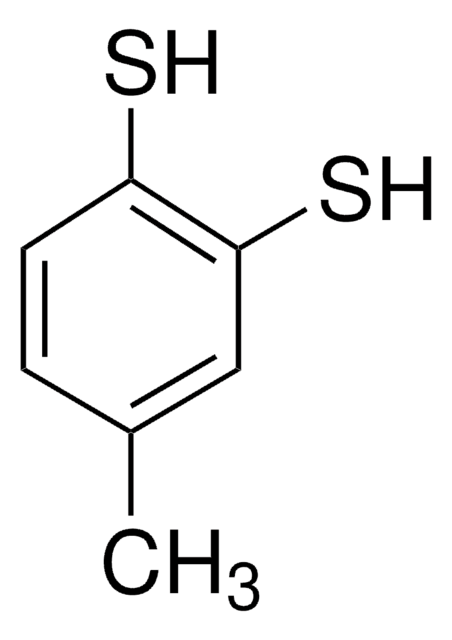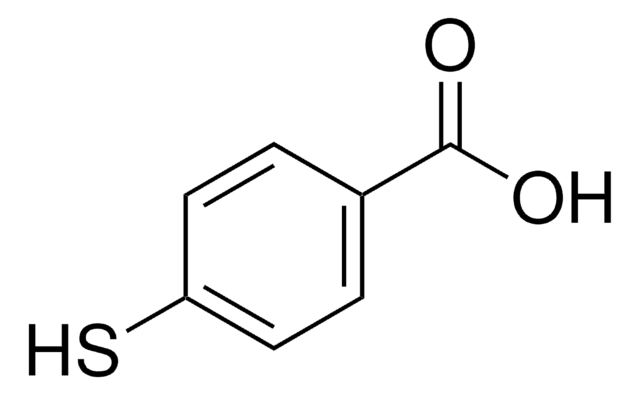763969
Benzene-1,4-dithiol
99% (GC)
Synonym(s):
1,4-Benzenedithiol, 1,4-Dimercaptobenzene
Sign Into View Organizational & Contract Pricing
All Photos(2)
About This Item
Empirical Formula (Hill Notation):
C6H6S2
CAS Number:
Molecular Weight:
142.24
MDL number:
UNSPSC Code:
12352103
PubChem Substance ID:
NACRES:
NA.23
Assay
99% (GC)
form
powder or crystals
mp
92-97 °C
storage temp.
2-8°C
SMILES string
Sc1ccc(S)cc1
InChI
1S/C6H6S2/c7-5-1-2-6(8)4-3-5/h1-4,7-8H
InChI key
WYLQRHZSKIDFEP-UHFFFAOYSA-N
General description
Benzene-1,4-dithiol (BDT) is a class of aromatic dithiol that can be used to form a self-assembled monolayer (SAM) on a variety of surfaces.
Application
BDT can be used as a cross-linker that facilitates the development of acrylate based light sensitive epoxidized soya bean oil for 3D printing applications. Gold based nanoconstrictions can be fabricated by functionalizing the surface with BDT, which reduces the overall flicker noise with respect to the unmodified surface.
This molecule can be used in single molecule junctions in electronic devices. It has also shown use in nanomaterial synthesis.
Storage Class Code
11 - Combustible Solids
WGK
WGK 3
Flash Point(F)
Not applicable
Flash Point(C)
Not applicable
Certificates of Analysis (COA)
Search for Certificates of Analysis (COA) by entering the products Lot/Batch Number. Lot and Batch Numbers can be found on a product’s label following the words ‘Lot’ or ‘Batch’.
Already Own This Product?
Find documentation for the products that you have recently purchased in the Document Library.
Customers Also Viewed
Xing; et al.
Journal of the American Chemical Society, 132, 7946-7946 (2011)
Li Lin et al.
ACS nano, 12(7), 6492-6503 (2018-06-21)
Charge transport plays an important role in defining both far-field and near-field optical response of a plasmonic nanostructure with an ultrasmall built-in nanogap. As the gap size of a gold core-shell nanomatryoshka approaches the sub-nanometer length scale, charge transport may
Photoresins based on acrylated epoxidized soybean oil and benzenedithiols for optical 3D printing
Miezinyte G, et al.
Rapid Prototyping Journal (2018)
Conductance of a molecular junction
Reed MA, et al.
Science, 278(5336), 252-254 (1997)
Yung-Ching Chang et al.
Optics express, 25(20), 24767-24779 (2017-10-19)
Near-field and far-field optical properties of plasmonic materials can be tailored by coupling the existing structures. However, fabricating 3D coupled structures in the solution by molecular linkers may suffer from low yield, low stability (particle aggregates), long reaction time, complex
Our team of scientists has experience in all areas of research including Life Science, Material Science, Chemical Synthesis, Chromatography, Analytical and many others.
Contact Technical Service



